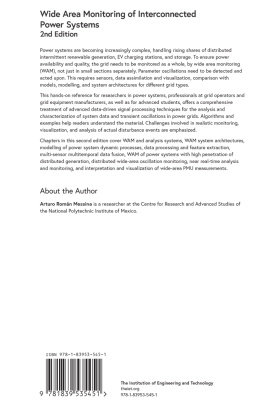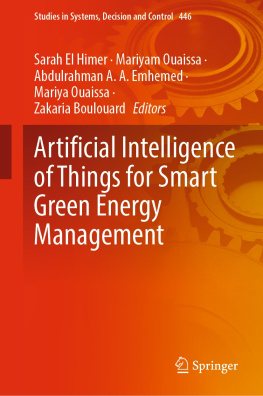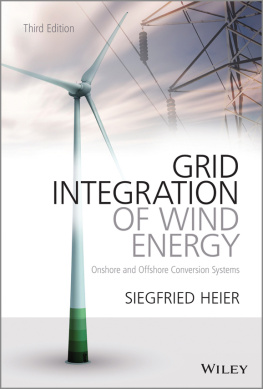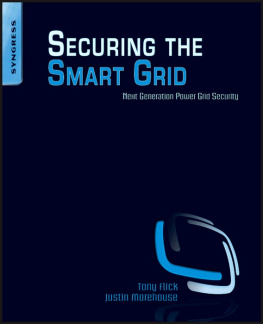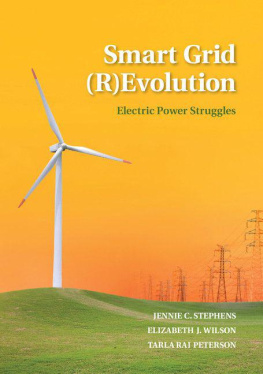
Table of Contents
List of Tables
- Chapter 1
- Chapter 2
- Chapter 3
- Chapter 4
- Chapter 5
- Chapter 6
- Chapter 7
- Chapter 8
- Chapter 9
- Chapter 10
- Chapter 11
- Chapter 12
- Chapter 13
- Chapter 14
- Chapter 15
- Chapter 17
- Chapter 18
- Chapter 19
- Chapter 20
- Chapter 21
- Chapter 25
List of Illustrations
- Chapter 1
- Chapter 2
- Chapter 3
- Chapter 4
- Chapter 5
- Chapter 6
- Chapter 7
- Chapter 8
- Chapter 9
- Chapter 10
- Chapter 11
- Chapter 12
- Chapter 13
- Chapter 14
- Chapter 15
- Chapter 16
- Chapter 17
- Chapter 18
- Chapter 19
- Chapter 20
- Chapter 21
- Chapter 22
- Chapter 23
- Chapter 24
- Chapter 25
Guide
Pages
Power Electronics-Enabled Autonomous Power Systems
Next Generation Smart Grids
Qing-Chang Zhong
Illinois Institute of Technology & Syndem LLC
Chicago, USA

This edition first published 2020
2020 John Wiley & Sons Ltd
All rights reserved. No part of this publication may be reproduced, stored in a retrieval system, or transmitted, in any form or by any means, electronic, mechanical, photocopying, recording or otherwise, except as permitted by law. Advice on how to obtain permission to reuse material from this title is available at http://www.wiley.com/go/permissions.
The right of QingChang Zhong to be identified as the author of this work has been asserted in accordance with law.
Registered Offices
John Wiley & Sons, Inc., 111 River Street, Hoboken, NJ 07030, USA
John Wiley & Sons Ltd, The Atrium, Southern Gate, Chichester, West Sussex, PO19 8SQ, UK
Editorial Office
The Atrium, Southern Gate, Chichester, West Sussex, PO19 8SQ, UK
For details of our global editorial offices, customer services, and more information about Wiley products visit us at www.wiley.com.
Wiley also publishes its books in a variety of electronic formats and by printondemand. Some content that appears in standard print versions of this book may not be available in other formats.
Limit of Liability/Disclaimer of Warranty
MATLAB is a trademark of The MathWorks, Inc. and is used with permission. The MathWorks does not warrant the accuracy of the text or exercises in this book. This work's use or discussion of MATLAB software or related products does not constitute endorsement or sponsorship by The MathWorks of a particular pedagogical approach or particular use of the MATLAB software. In view of ongoing research, equipment modifications, changes in governmental regulations, and the constant flow of information relating to the use of experimental reagents, equipment, and devices, the reader is urged to review and evaluate the information provided in the package insert or instructions for each chemical, piece of equipment, reagent, or device for, among other things, any changes in the instructions or indication of usage and for added warnings and precautions. While the publisher and author have used their best efforts in preparing this work, they make no representations or warranties with respect to the accuracy or completeness of the contents of this work and specifically disclaim all warranties, including without limitation any implied warranties of merchantability or fitness for a particular purpose. No warranty may be created or extended by sales representatives, written sales materials or promotional statements for this work. The fact that an organization, website, or product is referred to in this work as a citation and/or potential source of further information does not mean that the publisher and author endorse the information or services the organization, website, or product may provide or recommendations it may make. This work is sold with the understanding that the publisher is not engaged in rendering professional services. The advice and strategies contained herein may not be suitable for your situation. You should consult with a specialist where appropriate. Further, readers should be aware that websites listed in this work may have changed or disappeared between when this work was written and when it is read. Neither the publisher nor author shall be liable for any loss of profit or any other commercial damages, including but not limited to special, incidental, consequential, or other damages.
Library of Congress CataloginginPublication data applied for
HB ISBN: 9781118803523
Cover Design: Wiley
Cover Images: Electric Car Nerthuz/Getty Images, Computer Technology RoyFWylam/Getty Images, Led light bulb ppart/Shutterstock, Industrial electric motor scanrail/Getty Images, Hydro dam water ChrisGorgio/Getty Images, Solar Panel filo/Getty Images, Energy Voyagerix/Shutterstock, Nuclear power plant TTstudio/Shutterstock, A field of wind turbines linearcurves/Getty Images
To
Ms. Lihua Luo, my firstgrade teacher, who told me:
you have nothing but potential. Keep moving forward. Never stop.
and
Ms. Xiufen Lin, my thirdgrade teacher, who told me:
you have nothing but do not envy others.
List of Figures
Structure of the book.
Examples of divisive opinions in a democratized society.
The sinusoidlocked loop (SLL) that explains the inherent synchronization mechanism of a synchronous machine.
Estimated electricity consumption in the US.
A twoport virtual synchronous machine (VSM).
SYNDEM grid architecture based on the synchronization mechanism of synchronous machines (Zhong 2016b, 2017e).
A SYNDEM home grid.
A SYNDEM neighborhood grid.
A SYNDEM community grid.
A SYNDEM district grid.
A SYNDEM regional grid.
The iceberg of power system challenges and solutions.
The frequency regulation capability of a VSM connected the UK public grid.
Illustrations of the imaginary operator and the ghost operator.
The system pair that consists of the original system and its ghost.
Illustration of the ghost power theory.
Structure of an idealized threephase roundrotor synchronous generator with p = 1, modified from (Grainger and Stevenson 1994, figure 3.4).
The power part of a synchronverter is a basic inverter.
The electronic part of a synchronverter without control.
The electronic part of a synchronverter with the function of frequency and voltage control, and real and active power regulation.
Operation of a synchronverter under different grid frequencies (left column) and different load conditions (right column).
Experimental setup with two synchronverters.
Experimental results in the set mode: output currents with 2.25 kW real power.
Experimental results in the set mode: output currents (left column) and the THD of phaseA current (right column) under different real powers.
Experimental results in the droop mode: primary frequency response.
Experimental results: the currents of the grid, VSG, and VSG2 under the parallel operation of VSG and VSG2 with a local resistive load.
Real power P and reactive power Q during the change in the operation mode.
Transient responses of the synchronverter.
Structure of an idealized threephase roundrotor synchronous motor.
Next page



